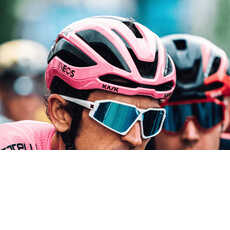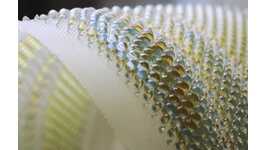
3D Printing and Wind Tunnel Technology Was Used for This Bodysuit
Hayley McGlone — July 22, 2016 — Tech
References: digitaltrends
Cyclist Tom Dumoulin is wearing an aerodynamic cycling bpdysuit for the Tour de France bicycle race this year. Researchers at Netherlands' Delft University of Technology used 3D printing and wind tunnel technology to create the piece of athleticwear.
Dumoulin spent 30 minutes riding a stationary bike while 150 DSLR cameras continuously photographed his movements from various angles in order to develop the bodysuit. The team of researchers then created a 3D printed model of Dumoulin on the bike from the images captured by the cameras.
The 3D printed model was built in eight parts so researchers could manipulate the model as they needed and to adjust the bodysuit on the model. The bodysuit-fitted 3D model was placed into the wind tunnel to test for how much drag the suit created. This process was repeated until the team found the perfect bodysuit with the least amount of drag.
Dumoulin spent 30 minutes riding a stationary bike while 150 DSLR cameras continuously photographed his movements from various angles in order to develop the bodysuit. The team of researchers then created a 3D printed model of Dumoulin on the bike from the images captured by the cameras.
The 3D printed model was built in eight parts so researchers could manipulate the model as they needed and to adjust the bodysuit on the model. The bodysuit-fitted 3D model was placed into the wind tunnel to test for how much drag the suit created. This process was repeated until the team found the perfect bodysuit with the least amount of drag.
Trend Themes
1. Aerodynamic Sportswear - There is an opportunity to innovate in developing more aerodynamic sportswear by using 3D printing and wind tunnel technology.
2. Customized Athletic Apparel - The use of 3D printing and precise imaging technology also has the potential to create perfectly fitted customized athletic apparel.
3. Data-driven Performance Enhancements - 3D imaging technology and data analysis can be used to optimize athletic performance enhancements with greater precision.
Industry Implications
1. Sports Apparel - The sports apparel industry can utilize 3D printing and wind tunnel technology to develop more aerodynamic and customized apparel for athletes.
2. Sporting Goods - Companies that manufacture sporting goods can benefit from incorporating precise data-driven design into their product development processes.
3. Professional Athletics - The use of 3D imaging and data analysis can help professional athletes gain a competitive edge by optimizing their performance with personalized equipment and apparel.
3.9
Score
Popularity
Activity
Freshness
























